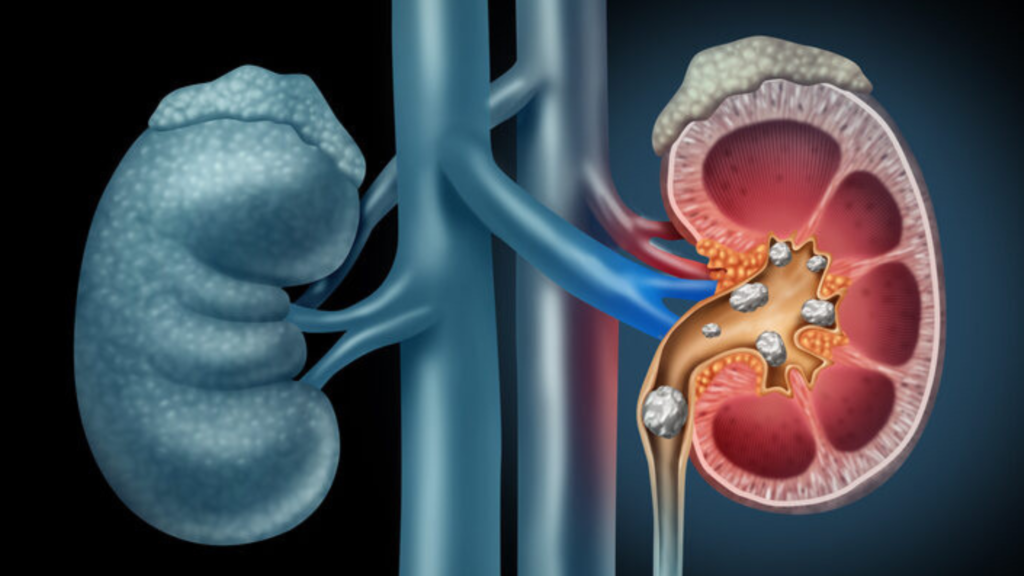
Kidney stones can bring about excruciating pain and discomfort, affecting millions of individuals globally. When these stubborn stones refuse to pass naturally or grow too large to be managed with conservative treatments, the world of surgical interventions opens up. In this detailed exploration, we embark on a journey to understand three prominent procedures in the realm of kidney stone surgery: Ureteroscopy (URS), Retrograde Intrarenal Surgery (RIRS), and Percutaneous Nephrolithotomy (PCNL). As we unravel the intricacies of each technique, we aim to shed light on the nuances of these surgeries, providing a comprehensive guide for those navigating the path towards relief from the challenges posed by kidney stones.
Ureteroscopy (URS)
Ureteroscopy (URS) stands as a beacon of hope for those grappling with kidney stones, offering a minimally invasive approach to stone removal. This procedure, guided by cutting-edge technology, not only provides relief from the pain and discomfort associated with kidney stones but also reduces recovery time compared to traditional surgical methods. Let’s delve into the intricacies of Ureteroscopy, exploring each stage of the process.
1. Preliminary Preparations
Before embarking on the Ureteroscopy journey, patients undergo thorough preoperative assessments. These may include blood tests, imaging studies, and a discussion of medical history. Anaesthesia is administered to ensure the patient’s comfort during the procedure. Once prepared, the patient is ready for the transformative experience of URS.
2. Ureteroscope Insertion
The cornerstone of URS lies in the utilization of a specialized tool known as a ureteroscope. This thin, flexible instrument, equipped with a powerful light source and a miniature camera, is gently introduced into the urinary tract. The journey commences through the urethra and the bladder, ultimately reaching the affected area in the ureter or kidney.
3. Real-Time Visualization
As the ureteroscope advances, real-time imaging capabilities come to the forefront. The surgeon is granted a meticulous view of the kidney stones and the surrounding structures, allowing for precise navigation and targeted intervention. This visual feedback is invaluable, aiding the surgeon in making informed decisions throughout the procedure.
4. Locating the Culprit
Once the ureteroscope reaches its destination, the surgeon focuses on locating the kidney stone. The high-definition camera reveals the size, shape, and position of the stone, guiding the subsequent steps of the intervention. This precise identification sets the stage for effective stone removal.
5. Stone Removal Techniques
Basket Extraction: For smaller stones, a basket-like device may be employed to grasp and remove the stone intact. This technique is particularly effective for stones that are conducive to being pulled out without fragmentation.
Laser Lithotripsy: In cases where the stone is too large or resistant to basket extraction, laser lithotripsy comes into play. The surgeon employs laser energy to fragment the stone into smaller, more manageable pieces. These fragments can then be extracted or allowed to pass naturally.
6. Postoperative Care
One of the standout features of URS is its relatively quick recovery time. Following the procedure, patients typically experience mild discomfort, which can be managed with pain medications. Unlike traditional open surgeries, activities can be resumed within a few days, marking a significant advantage for those seeking a swift return to normalcy.
Retrograde Intrarenal Surgery (RIRS)
Retrograde Intrarenal Surgery (RIRS) emerges as a sophisticated and minimally invasive technique designed to address kidney stones that have taken residence within the intricate pathways of the renal system. Offering a viable alternative to traditional open surgeries, RIRS harnesses the power of advanced technology to navigate the complexities of kidney stone removal. Let’s embark on a detailed exploration of the key elements that define RIRS.
1. Initial Steps and Preoperative Preparations
The RIRS journey begins with a comprehensive preoperative evaluation, including blood tests, imaging studies, and a thorough discussion of the patient’s medical history. Like other minimally invasive procedures, anaesthesia is administered to ensure patient comfort. Once prepared, the patient is ready to undergo the transformative experience of Retrograde Intrarenal Surgery.
2. Accessing the Kidney
Unlike Ureteroscopy, which primarily focuses on the ureter, RIRS involves accessing the kidney itself. A flexible ureteroscope, equipped with a miniature camera and light source, is introduced through the urethra and bladder. The journey continues as the ureteroscope advances through the ureter and into the intricate network of renal structures.
3. Laser Lithotripsy
With the ureteroscope in position, the surgeon relies on the remarkable precision of laser lithotripsy. This cutting-edge technique involves using laser energy to fragment kidney stones into smaller, more manageable pieces. The flexibility of the ureteroscope allows the surgeon to reach stones located within the kidney’s inner recesses.
4. Real-Time Imaging for Precision
As with Ureteroscopy, RIRS provides real-time imaging that serves as a guiding light for the surgeon. The high-definition camera on the ureteroscope offers a meticulous view of the kidney stones and their surrounding environment. This visual feedback is instrumental in determining the optimal approach to stone fragmentation and removal.
5. Stone Fragment Retrieval
Following laser lithotripsy, the next critical step is the retrieval of the stone fragments. Depending on the size and location of the stones, the surgeon may employ specialized tools, such as a basket-like device, to grasp and remove the fragments. Alternatively, smaller fragments may be left to pass naturally through the urinary tract.
6. Advantages of RIRS
RIRS boasts several advantages, including reduced invasiveness, faster recovery times, and minimal postoperative discomfort. It is particularly well-suited for treating smaller stones and those situated in challenging locations within the kidney. The technique’s precision and efficiency make it a preferred choice for patients seeking a minimally disruptive approach to kidney stone intervention.
7. Postoperative Care
Recovery after RIRS is typically quicker compared to traditional open surgeries. Patients may experience mild discomfort, which can be managed with pain medications. The minimally invasive nature of RIRS allows for a faster return to regular activities, enhancing the overall patient experience.
Percutaneous Nephrolithotomy (PCNL)
Percutaneous Nephrolithotomy (PCNL) represents a robust and effective surgical intervention for managing large or complex kidney stones. This procedure, known for its versatility and efficiency, involves accessing the kidney through a small incision in the back, enabling the surgeon to directly target and remove stones that may be challenging to address through less invasive methods. Let’s embark on a detailed exploration of the key elements that define PCNL.
1. Initial Steps and Patient Preparation
The PCNL journey begins with thorough preoperative assessments, including blood tests, imaging studies, and a comprehensive discussion of the patient’s medical history. Before the procedure, the patient is administered anaesthesia, ensuring a pain-free experience. Subsequently, a small incision is made in the patient’s back, creating a direct pathway to the kidney.
2. Accessing the Kidney
Unlike Ureteroscopy and RIRS, which navigate the urinary tract through the urethra, PCNL involves a different approach. The surgeon inserts a hollow tube called a nephrostomy tube directly into the kidney through the incision in the back. This tube serves as a conduit for instruments used during the stone removal process.
3. Visualization and Stone Fragmentation
With the nephrostomy tube in place, the surgeon employs advanced imaging techniques, such as fluoroscopy or ultrasound, to visualize the kidney stones. Once the stones are identified, specialized tools, such as an ultrasonic or laser probe, are utilized to fragment the stones into smaller, more manageable pieces. The larger working channel of PCNL instruments allows for efficient stone fragmentation.
4. Stone Extraction
Following successful stone fragmentation, the surgeon extracts the smaller stone fragments. This may involve the use of suction devices or forceps to grasp and remove the pieces. In some cases, a stone basket may be employed to facilitate the extraction process. The goal is to clear the kidney of all stone material to prevent recurrence.
5. Temporary Drainage Tube
To ensure optimal drainage and prevent the accumulation of residual stone fragments or blood, a temporary drainage tube is often left in place. This tube is typically connected to a drainage bag and may remain for a short duration postoperatively.
6. Postoperative Care
Recovery after PCNL generally involves a hospital stay of one or more days, depending on the complexity of the procedure and the patient’s condition. Postoperative discomfort is managed with pain medications, and patients are closely monitored for any signs of complications. The temporary drainage tube is typically removed before discharge, and patients are provided with guidelines for home care and follow-up appointments.
7. Advantages and Considerations
PCNL offers several advantages, particularly for larger or more complex kidney stones. Its direct access to the kidney allows for efficient stone removal, reducing the need for multiple procedures. However, it’s important to note that PCNL is a more invasive procedure compared to Ureteroscopy or RIRS, and the recovery period may be longer.
Conclusion
In the realm of kidney stone management, the evolution of surgical techniques has provided a spectrum of options, each tailored to address the unique challenges presented by these crystalline formations. Ureteroscopy (URS), Retrograde Intrarenal Surgery (RIRS), and Percutaneous Nephrolithotomy (PCNL) stand as pillars of innovation, offering patients not only relief from the burden of kidney stones but also a path towards quicker recovery and improved quality of life.
As patients and healthcare professionals navigate the landscape of kidney stone surgery, the choice among these procedures hinges on various factors, including the size and location of the stones, the patient’s overall health, and the preferences of the surgical team. What remains constant is the commitment to providing effective and personalised solutions that alleviate the pain and inconvenience associated with kidney stones.
In the journey towards stone-free living, informed decision-making is paramount. Consulting with urological specialists, understanding the nuances of each procedure, and considering individual health profiles pave the way for a collaborative approach to kidney stone management.
Dr. Sumit Sharma is an experienced urologist, andrologist, and kidney transplant surgeon with over 20 years of clinical experience. He is the founder of the Department of Urology at multiple hospitals in Gurgaon and has established successful kidney transplant programs across the city.
With a commitment to the highest standards, Dr. Sumit Sharma ensures personalised, professional treatment, making your well-being the primary focus. Choose Dr. Sumit Sharma for outstanding Urological care in Gurgaon.



